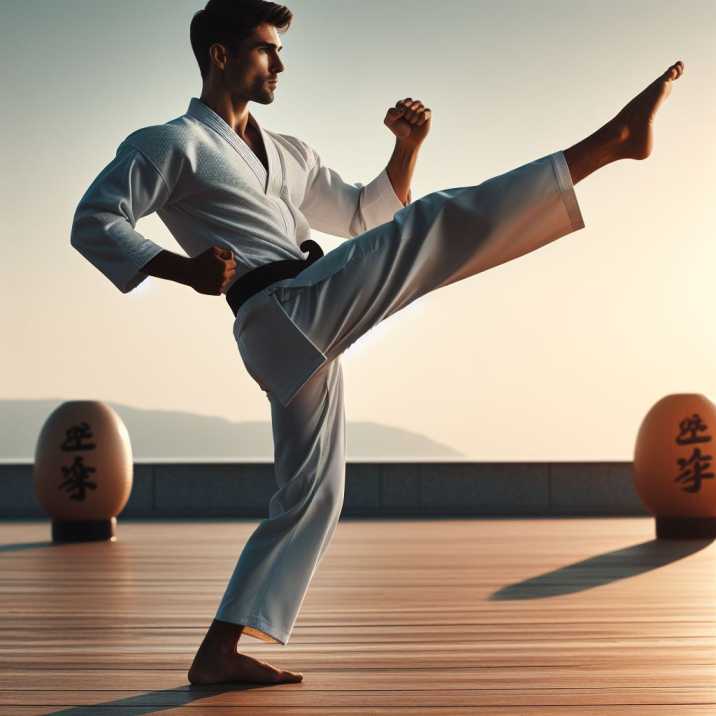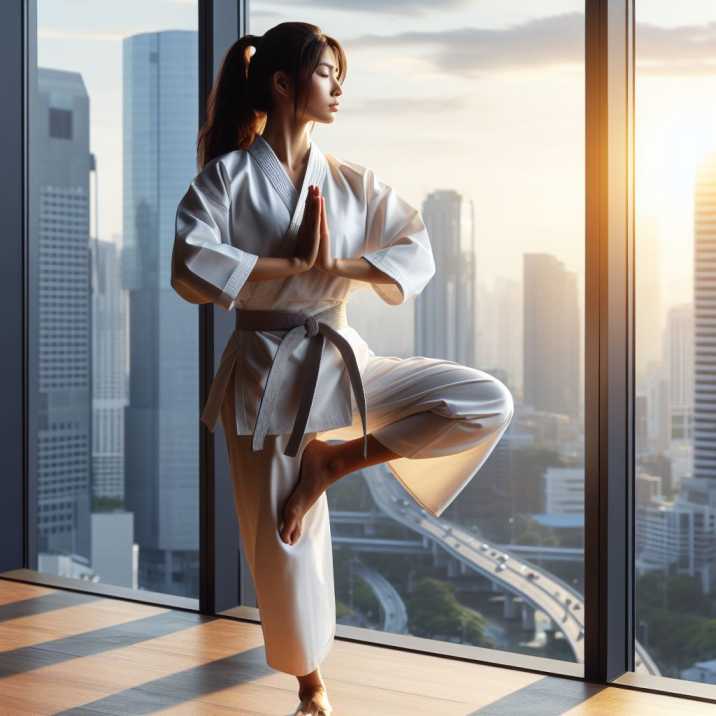Introduction:
Table of Contents
Balancing Exercises for Martial Arts Students with Sensory Issues
Martial arts is not just about physical strength; it’s also about balance, coordination, and focus. For students with sensory issues, mastering these skills can present unique challenges. However, with the right approach and exercises, they can overcome these obstacles and excel in their martial arts practice. In this comprehensive guide, we’ll delve into 10 balancing exercises for martial arts students with sensory issues.
10 balancing exercises for martial arts students with sensory issues
Single-Leg Stance:
This foundational exercise is perfect for improving balance and stability. Stand on one leg while keeping the other lifted slightly off the ground. Focus on maintaining your balance for as long as possible before switching to the other leg.

Tightrope Walk:
Imagine walking along a tightrope, placing one foot directly in front of the other. This exercise helps improve proprioception and strengthens the muscles involved in maintaining balance.
Balancing Board:
A balancing board is a fantastic tool for improving balance and coordination. Stand on the board with feet shoulder-width apart and try to maintain your balance as the board tilts in different directions.
Yoga Tree Pose:
The tree pose in yoga is excellent for enhancing balance and concentration. Stand on one leg, bend the opposite knee, and place the sole of the foot against the inner thigh of the standing leg. Focus on a fixed point to help stabilize your balance.

Stability Ball Exercises:
Using a stability ball adds an extra challenge to balancing exercises. Sit or lie on the stability ball while engaging your core muscles to maintain balance. You can also perform exercises such as squats or push-ups using the stability ball for added difficulty.
Wobble Cushion Activities:
Wobble cushions are inflatable cushions that provide an unstable surface for balance training. Sit or stand on the cushion and focus on maintaining your balance while performing various movements or exercises.
Tai Chi:
Tai Chi is a gentle form of martial arts that emphasizes slow, flowing movements and mindfulness. Practicing Tai Chi can improve balance, flexibility, and overall well-being for martial arts students with sensory issues.
Foam Pad Exercises:
Foam pads provide an unstable surface similar to wobble cushions but with a different texture. Stand or sit on the foam pad and challenge yourself to maintain balance while performing exercises such as arm raises or leg lifts.
BOSU Ball Workouts:
A BOSU ball is a versatile piece of equipment that can be used to improve balance, stability, and core strength. Stand on the flat side of the BOSU ball or flip it over and use the rounded side for added difficulty.
Sensory Integration Activities:
Incorporate sensory integration activities into your balancing exercises to address specific sensory issues. Activities such as brushing therapy, weighted vests, or sensory bins can help improve sensory processing and overall balance.
Information-based table
| Exercise Name | Description | Benefits |
|---|---|---|
| Single-Leg Stance | Stand on one leg while lifting the other slightly off the ground. | Improves balance and stability |
| Tightrope Walk | Walk placing one foot directly in front of the other as if on a tightrope. | Enhances proprioception and balance |
| Balancing Board | Stand on a board that tilts in different directions, challenging balance and coordination. | Improves balance and coordination |
| Yoga Tree Pose | Stand on one leg with the other foot placed against the inner thigh, focusing on balance. | Enhances balance and concentration |
| Stability Ball | Perform exercises while sitting or lying on a stability ball, engaging core muscles. | Strengthens core muscles and improves balance |
| Wobble Cushion | Sit or stand on an inflatable cushion, maintaining balance on an unstable surface. | Improves balance and proprioception |
| Tai Chi | Gentle martial art focusing on slow, flowing movements and mindfulness. | Enhances balance, flexibility, and focus |
| Foam Pad Exercises | Perform exercises while standing or sitting on a foam pad, challenging balance. | Improves balance and stability |
| BOSU Ball Workouts | Perform exercises on a BOSU ball, engaging core muscles and challenging balance. | Strengthens core muscles and improves balance |
| Sensory Integration | Incorporate sensory activities such as brushing therapy or weighted vests into exercises. | Addresses specific sensory issues and improves balance |
Conclusion:
balancing exercises for martial arts students with sensory issues to improve stability, focus, and coordination. By incorporating these 10 exercises into their training regimen, students can overcome challenges and achieve success in their martial arts practice.
FAQs: Balancing exercises for martial arts students with sensory issues
- Can balancing exercises help martial arts students with sensory issues?
- Yes, balancing exercises are beneficial for improving stability and coordination, which are essential skills for martial arts practice.
- How often should martial arts students with sensory issues perform balancing exercises?
- It’s recommended to incorporate balancing exercises into daily or weekly training sessions to see improvements over time.
- Are there any specific balancing exercises that are more effective for sensory issues?
- Exercises that focus on proprioception and sensory integration, such as using wobble cushions or foam pads, can be particularly beneficial.
- Can Tai Chi help with sensory issues in martial arts students?
- Yes, Tai Chi promotes mindfulness and gentle movement, which can benefit students with sensory issues by improving balance and focus.
- Are there any safety considerations when performing balancing exercises?
- It’s essential to start with basic exercises and gradually increase difficulty to avoid injury. Additionally, always use proper equipment and supervise students during exercises.
- How long does it take to see improvements in balance with these exercises?
- The timeline for improvement varies for each individual, but consistent practice over time will lead to noticeable improvements in balance and stability.
- Can balancing exercises be adapted for students with severe sensory issues?
- Yes, exercises can be modified or adapted based on individual needs and abilities to ensure a safe and effective workout.
- ents with sensory issues in martial arts?
- It’s essential to consult with a healthcare professional or qualified instructor to determine the suitability of specific exercises based on individual circumstances.


